 | TODAY IN SCIENCE HISTORY NEWSLETTER - 21 DECEMBER |
| Book of the Day | ||
|
| Quotations for Today | |
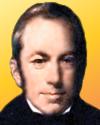 | These motions were such as to satisfy me, after frequently repeated observation, that they arose neither from currents in the fluid, nor from its gradual evaporation, but belonged to the particle itself. Summary of Brownian motion. |
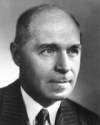 | As science is more and more subject to grave misuse as well as to use for human benefit it has also become the scientist's responsibility to become aware of the social relations and applications of his subject, and to exert his influence in such a direction as will result in the best applications of the findings in his own and related fields. Thus he must help in educating the public, in the broad sense, and this means first educating himself, not only in science but in regard to the great issues confronting mankind today. |
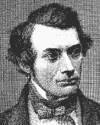 | [Mercurial medicines] affect the human constitution in a peculiar manner, taking, so to speak, an iron grasp of all its systems, and penetrating even to the bones, by which they not only change the healthy action of its vessels, and general structure, but greatly impair and destroy its energies; so that their abuse is rarely overcome. When the tone of the stomach, intestines, or nervous system generally, has been once injured by this mineral ... it could seldom be restored. |
| Quiz | |
| Before you look at today's web page, see if you can answer some of these questions about the events that happened on this day. Some of the names are very familiar. Others will likely stump you. Tickle your curiosity with these questions, then check your answers on today's web page. | |
| Births | |
 | On 21 Dec 1890, Hermann Muller was born, a Nobel Prize-winning American geneticist. He studied mutations and hereditary changes by affecting the genes and chromosomes of living cells. His first results were produced in the fruit fly Drosophila in 1927. How did Muller cause the mutations? How did Muller cause the mutations? |
 | Robert Brown, born 21 Dec 1773, was a botanist who recognized the fundamental distinction between the conifers and their allies (gymnosperms) and the flowering plants (angiosperms). He recognized, and coined the name for, the cell nucleus (Latin: “little nut”). However, he is best known for his description of the natural continuous motion of minute particles in solution, still called Brownian Motion. What nationality was Robert Brown? What nationality was Robert Brown? |
| Deaths | |
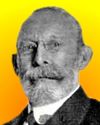 | Charles Benjamin Dudley was an American chemical engineer (1842-1909) who helped found the science of materials testing. Through continuing testing, he established the idea of rigorous standards. These covered fuels, lubricants, paints, lighting devices and various mechanical parts of locomotives and rolling stock. What was the first product he researched (published 1878)? What was the first product he researched (published 1878)? |
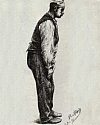 | An English physician and amateur paleontologist (1755-1824) wrote Essay on the Shaking Palsy (1817), in which he was the first to describe the neuromuscular disease which is now known by his name. The symptoms are a generalized slowness of movement, a tremor or slight shaking on one side of the body when at rest, some stiffness of the limbs, and problems of gait or balance. Who is this physician, remembered in the name of this disease? Who is this physician, remembered in the name of this disease? |
| Events | |
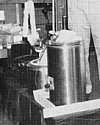 | On 21 Dec of a certain year, dried human blood serum was prepared for the first time in the U.S. The powdered, dried blood serum was used successfully for transfusions for the prevention of childhood diseases. Dried blood serum was used during wartime. In which decade was dried blood serum first prepared in the U.S.? In which decade was dried blood serum first prepared in the U.S.? |
On 21 Dec 1937, Walt Disney's first full-length, animated film opened in Los Angeles, California. What was the name of this first full-length animated film? What was the name of this first full-length animated film? | |
| Answers |
| When you have your answers ready to all the questions above, you'll find all the information to check them, and more, on the December 21 web page of Today in Science History. Or, try this link first for just the brief answers. Fast answers for the previous newsletter for December 20: Robert Van de Graaff • Cosmos • by the force produced through evaporation from the leaves • The decade containing the year 1892 • Albert Michelson • Great White Way. |
| Feedback |
 If you enjoy this newsletter, the website, or wish to offer encouragement or ideas, please send feedback by using your mail reader Reply button. If you enjoy this newsletter, the website, or wish to offer encouragement or ideas, please send feedback by using your mail reader Reply button. Your click on a StumbleUpon, Google+ or Facebook social button on the site webpages is also a welcome sign of appreciation. Thank you for using them. |
| Copyright |
| To find citations for quotations go to the corresponding webpage by clicking on the “quotes” balloon icon. Sources for the thumbnails appear on today's webpage with the corresponding item. � This newsletter is copyright 2013 by todayinsci.com. Please respect the Webmaster's wishes and do not put copies online of the Newsletter � or any Today in Science History webpage. (If you already have done so, please remove them. Thank you.) Offline use in education is encouraged such as a printout on a bulletin board, or projected for classroom viewing. Online, descriptive links to our pages are welcomed, as these will provide a reader with the most recent revisions, additions and/or corrections of a webpage. For any other copyright questions, please contact the Webmaster by using your mail reader Reply button. |
--
If you do not want to receive any more newsletters, Unsubscribe
To update your preferences and to unsubscribe visit this link


Δεν υπάρχουν σχόλια:
Δημοσίευση σχολίου